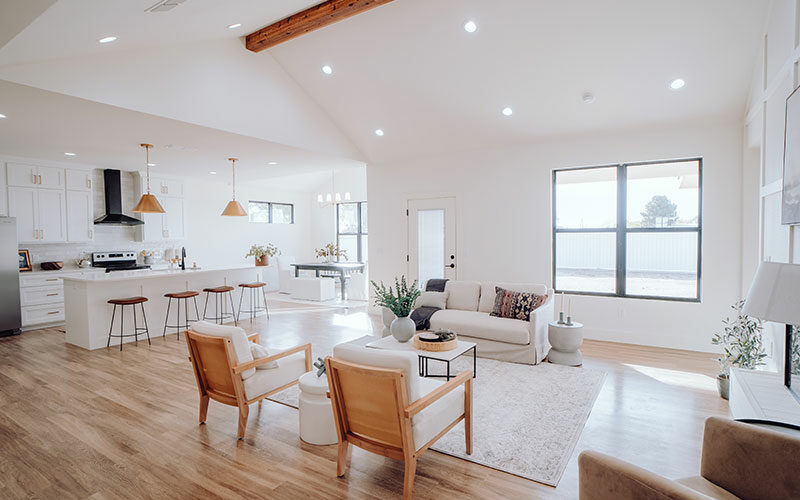Advertisement
Open-plan living has become a staple in modern home design, with homeowners and designers alike embracing the concept of spacious, interconnected rooms. But like any design trend, finding furniture for an open-plan living room and kitchen area comes with its own set of advantages and challenges. Let’s delve into the world of open-plan living, exploring its history, its pros and cons, and offering tips on how to make it work for you.
A Brief History of Open-Plan Living
The concept of open-plan living isn’t new. In fact, it has roots that trace back to the 1950s and 1960s. Initially, builders adopted open floor plans for their affordability and ease of construction. By removing walls, they could fit the same functionality into fewer square feet, making homes more versatile and cost-effective. Over time, this design approach gained popularity, especially in the 1990s and 2000s, when most new construction homes featured open floor plans. The design not only catered to the lifestyle enhancements of the modern family but also offered a unique aesthetic appeal that many homeowners found hard to resist.
The Allure of Openness
One of the most significant advantages of open-plan living is the sense of space it creates. By removing barriers between the kitchen, dining, and living areas, homes feel larger, airier, and more welcoming. This design approach promotes family time, as it’s easier to communicate and interact when walls don’t separate you. Imagine helping your kids with their homework while preparing dinner or having a chat with a friend while they relax on the couch – all within the same visual and physical space.
Moreover, open-plan homes are fantastic for entertaining. The absence of walls means more space for guests to mingle, making your home the ideal venue for parties and gatherings. Additionally, the design allows for better traffic flow and increased natural light, making spaces feel brighter and more inviting.
The Challenges of Open Spaces
However, open-plan living isn’t without its challenges. One of the most common concerns homeowners have is noise. In a space where multiple activities can occur simultaneously, noise can easily travel, potentially causing disturbances. For instance, the sound of the television in the living area might interfere with a conversation happening in the dining space.
Another challenge is the lack of privacy. In an open-plan home, personal space can sometimes feel compromised. If you’re someone who values solitude or quiet moments, finding a private nook in an open space can be tricky.
Additionally, there’s the issue of heating and cooling. Open spaces can be more challenging and costly to heat or cool compared to smaller, enclosed rooms. This can lead to increased energy bills, especially if the home isn’t well-insulated.
Making Open-Plan Living Work for You
Despite the challenges, many homeowners love the open-plan concept and wouldn’t trade it for the world. If you’re one of them, here are some tips to make open-plan living work for you:
- Define Spaces with Furniture: Use furniture to delineate different areas within the open space. For instance, a kitchen island can separate the cooking area from the dining space, while a rug can define the living area.
- Incorporate Storage Solutions: With everything in plain sight, clutter can become an eyesore. Invest in storage solutions like cabinets, shelves, and storage ottomans to keep things organised.
- Use Colour to Differentiate Areas: While maintaining a cohesive colour scheme is essential, you can use different shades or accents to define various zones within the open space.
- Invest in Soundproofing: If noise is a concern, consider investing in soundproofing solutions. Rugs, wall hangings, and soft furnishings can help absorb sound and reduce echoes.
- Create Private Nooks: Even in an open-plan home, you can create private nooks for reading, working, or relaxing. Use room dividers, screens, or tall plants to carve out these spaces.
In conclusion, open-plan living offers a modern, spacious feel that many homeowners love. While it comes with its set of challenges, with a bit of creativity and planning, you can create a functional and beautiful open space that caters to your lifestyle and needs. Whether you’re renovating an existing home or building a new one, consider the pros and cons of open-plan living to make an informed decision.

